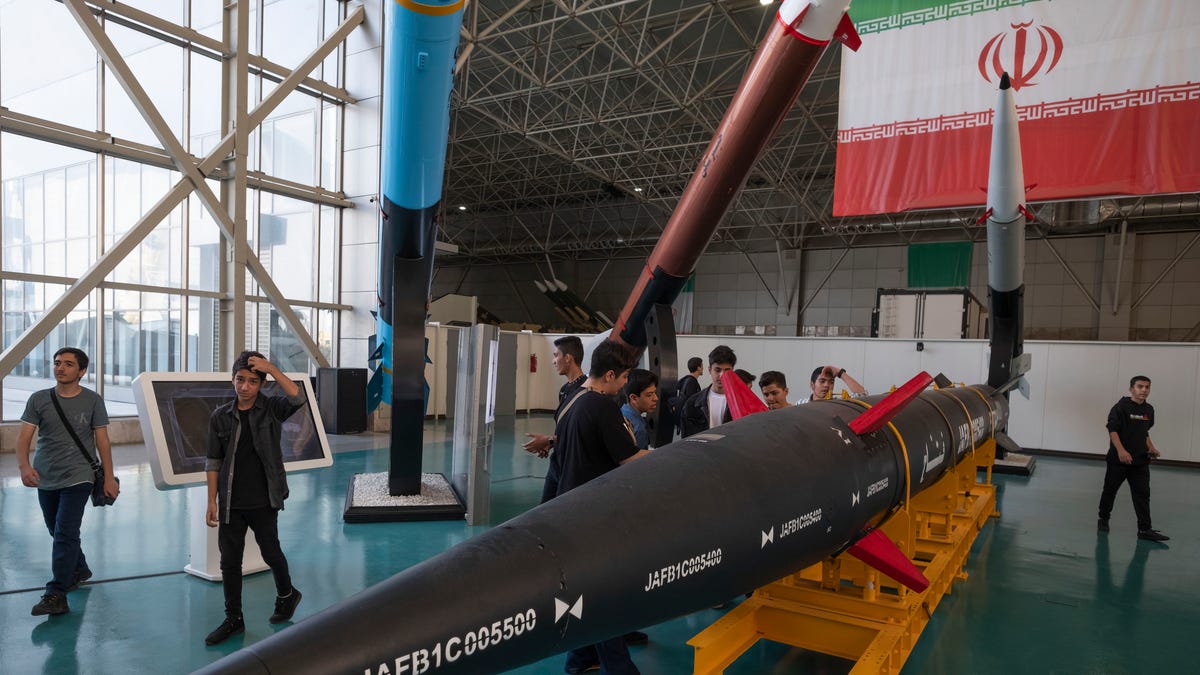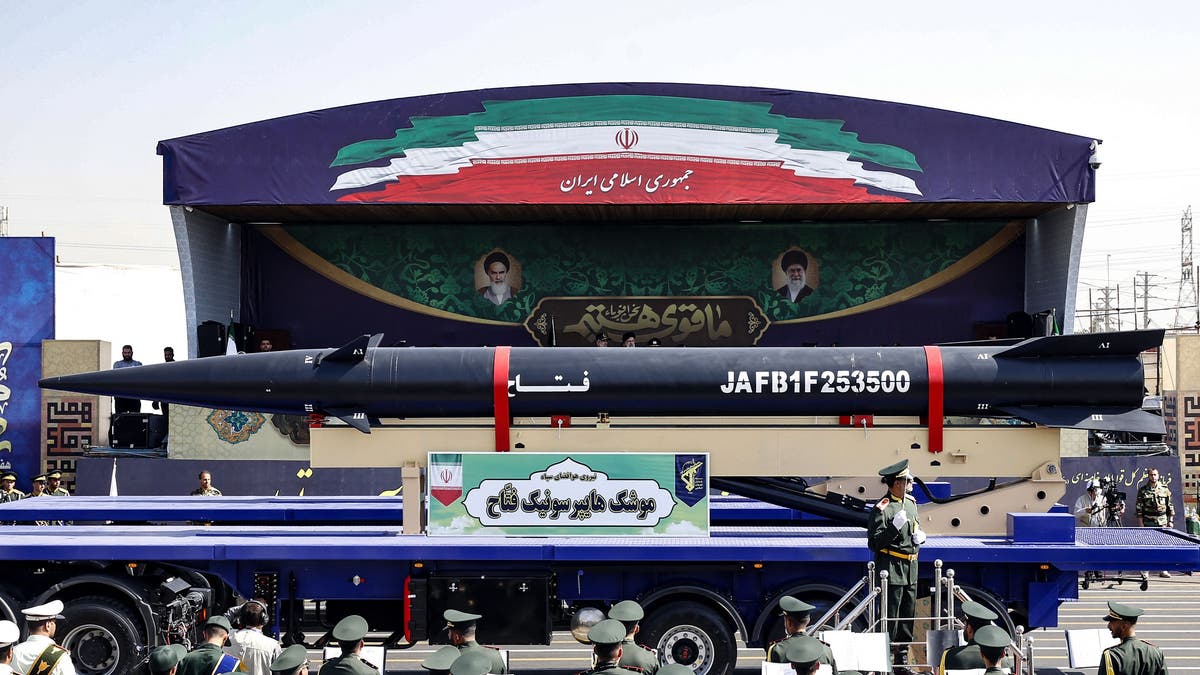Iran celebrates new hypersonic missile amid new threats by its proxies against US, allies
Iran claims to have developed a new hypersonic ballistic missile, allegedly expanding one of the most dangerous military capabilities at their disposal.
“While a genuine hypersonic capability would be a huge step forward for Iranian ballistic missiles, the claim should be taken with a grain of salt,” Behnam Ben Taleblu, a senior fellow at the Foundation for Defense of Democracies, told Fox News Digital.
“Earlier this year, the regime put forward a maneuvering re-entry vehicle (MaRV) as a hypersonic ballistic missile,” he explained. “Several Iranian ballistic missiles already re-entered the atmosphere at hypersonic speeds.”
The Fattah-2 missile follows the Fattah missile unveiled in June, which Tehran claims could hit a target at a distance of 870 miles, according to Euronews.
IRAN-BACKED MILITIA HITS US FORCES AT IRAQ AIR BASE, INJURING 8, PROMPTING RETALIATION
The Islamic Revolutionary Guard Corps (IRGC)’s aerospace force displayed the missile for the public at the Ashura Aerospace Science and Technology University during a visit from Supreme Leader Ayatollah Ali Khamenei, with some outlets posting pictures of the missile onto social media platform X.
“The regime showcased a hypersonic glide vehicle which it likely hopes will aid the lift-to-drag ratio of the munition,” Taleblu said. “Reports claim that the missile uses a liquid-fueled engine and not a solid-fueled motor.”
“While Iran’s IRGC aerospace force and ministry of defense-related contractors have significantly grown Iranian missile capabilities, a move toward hypersonic glide vehicles could be a harbinger of a resumption of high-level state assistance, perhaps Russian or North Korean,” he added.
Officials did not explain how the Fattah-2 improves on or differentiates from the original Fattah, but they claimed the weapon is in both the hypersonic glide vehicle and hypersonic cruise missile weapon classes, Al-Monitor reported.
US OFFICIAL SAYS IRAN COULD BE BEHIND YEMEN’S HOUTHI REBELS’ SEIZURE OF RED SEA CARGO SHIP: REPORT
The hypersonic glide vehicle would serve as a delivery system for a payload while a cruise missile is a self-propelled payload. Any hypersonic weapon boosts Iran into a rare class of military power, currently dominated by China and the U.S. with an alleged use-case by Russia in Ukraine.
Upon unveiling the original Fattah missile, Iranian state TV reportedly claimed the weapon “can bypass the most advanced anti-ballistic missile systems of the United States and the Zionist regime, including Israel’s Iron Dome,” adding that the Fattah “is a big generational leap in the field of missiles”.

Taleblu told Fox News Digital that Iran already allegedly possesses the largest stockpile of ballistic missiles in the Middle East.
The regime has funded and armed nearly two dozen proxy groups throughout the Middle East, including Hamas, the Houthis and Hezbollah – the same groups that attacked Israel and have attacked American forces stationed across the region. It has also provided weapons to Russia during the invasion of Ukraine.
GOP LAWMAKER TO INTRODUCE BILL TO PREVENT INTERNATIONAL MONETARY FUND FROM GIVING CASH TO ADVERSARIES
Hypersonic weapons, due to their high speeds and relatively lower altitude of trajectory, make them far more difficult to track and therefore defend against. When China claimed and tested a hypersonic glide vehicle in 2021, it sent shockwaves through the Pentagon, with one official telling the Financial Times they had “no idea” how China achieved the feat.
The following year saw the U.S. focus development on hypersonic weapons, doubling down on a 2020 ambition to aggressively pursue hypersonic weapon capabilities.

The Navy Strategic Systems and Missile Defense Agency conducted some tests last week to explore hypersonic strike capabilities as well as potential hypersonic defensive capabilities, witnessing a range of prototype systems and technologies from “partners across government, academia and industry,” according to a Navy press release.
Air Force Gen. Glen D. VanHerck, during a testimony before the Senate Armed Services Subcommittee on Strategic Forces regarding funding for 2024, stressed that the primary concern for military research and development should focus on countering hypersonic weapons.
“Hypersonic weapons are extremely difficult to detect and counter given the weapons’ speed and maneuverability, low flight paths and unpredictable trajectories,” VanHerck said, explaining that such capabilities would challenge NORAD and limit its ability to protect the U.S. and Canada.
CLICK HERE FOR THE FOX NEWS APP
“I believe the greatest risk for the United States stems from our inability to change at the pace required by the changing strategic environment,” he added.
“In an area of incredible innovation and technological achievement, inflexible, outdated processes are a greater impediment to success than many of our competitors’ advancements.”
Read the full article Here


